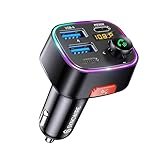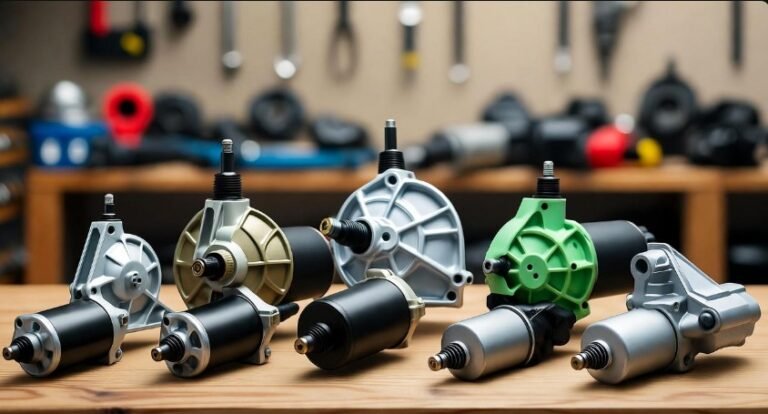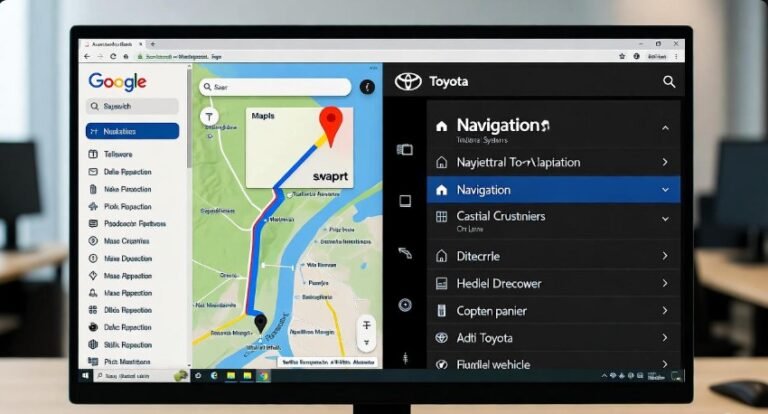Shine Bike Disc Brake Price: Get Yours Today

Discover the Shine Bike Disc Brake Price and Upgrade Your Ride Today!
Key Takeaways
Compare Shine Bike disc brake prices easily.
Understand factors influencing Shine Bike disc brake cost.
Find the best deals for your new disc brakes.
Learn about installation and maintenance benefits.
Choose the right Shine Bike disc brake for your needs.
Are you looking to enhance your bike’s stopping power and overall performance? Upgrading to disc brakes can make a significant difference, offering more consistent and reliable braking, especially in challenging conditions like wet weather or steep descents. You might be wondering about the “Shine Bike Disc Brake Price” and how to get the best value. Many riders find the initial investment in disc brakes highly rewarding, leading to safer rides and greater confidence. Let’s explore what goes into the cost of Shine Bike disc brakes and how you can secure yours today.
Why Upgrade to Shine Bike Disc Brakes?
Bicycle brakes are arguably the most critical safety component on any bike. While rim brakes have served cyclists for decades, disc brakes represent a significant advancement in braking technology. They offer several compelling advantages that make them a popular choice for modern cyclists, from casual riders to serious enthusiasts. Understanding these benefits helps justify the “Shine Bike Disc Brake Price” by highlighting the value they bring to your riding experience.
Disc brakes work by clamping a rotor attached to the wheel hub with a caliper mounted on the frame or fork. This system provides several key benefits:
Superior Stopping Power: Disc brakes generally offer more powerful and consistent braking force than rim brakes. This means you can slow down or stop your bike more quickly and with less effort.
All-Weather Performance: Unlike rim brakes, which rely on friction between the brake pad and the wheel rim, disc brakes are less affected by rain, mud, or snow. The rotor and caliper are positioned away from the road grime, ensuring reliable performance in adverse conditions.
Better Modulation: Disc brakes provide finer control over braking pressure. This “modulation” allows riders to apply just the right amount of braking force, preventing wheel lock-up and improving control, especially on technical descents.
Reduced Rim Wear: Rim brakes wear down the rim surface over time, which can eventually compromise wheel integrity. Disc brakes eliminate this issue, preserving your wheel rims.
Improved Aesthetics: Many riders find the sleek design of disc brake systems more visually appealing than traditional caliper or V-brakes.
These advantages contribute to a safer and more enjoyable cycling experience, making the “Shine Bike Disc Brake Price” a worthwhile consideration for many riders.
Understanding Shine Bike Disc Brake Price Factors
The price of Shine Bike disc brakes can vary considerably based on several key factors. When you’re looking at the “Shine Bike Disc Brake Price,” it’s helpful to know what influences the cost to ensure you’re making an informed decision and getting the best possible value for your investment.
Type of Disc Brake System
There are two primary types of disc brake systems: mechanical and hydraulic.
Mechanical Disc Brakes: These are operated by a steel cable, similar to traditional rim brakes. They are generally less expensive, simpler to maintain, and easier to repair on the go if needed. The cable creates some friction, so they may not offer the same level of power or modulation as hydraulic systems.
Hydraulic Disc Brakes: These use a fluid-filled hose to transmit braking force from the lever to the caliper. They offer superior stopping power, remarkable modulation, and require less hand effort. However, they tend to be more expensive and can be more complex to bleed (remove air from the fluid system) or repair.
Component Quality and Brand Reputation
Just like with any component, the quality of materials, manufacturing precision, and the reputation of the brand play a significant role in pricing. Higher-end components from established brands often come with a premium price tag due to their performance, durability, and advanced features. Shine Bike, as a brand, aims to balance performance with accessibility.
Specific Model and Features
Shine Bike likely offers a range of disc brake models, each with different features and performance characteristics. Options might include:
Rotor Size: Larger rotors generally offer more stopping power and better heat dissipation, but they can also add to the cost. Common sizes include 160mm, 180mm, and 203mm.
Brake Pad Material: Different pad materials (e.g., organic/resin, metallic/sintered) offer varying levels of performance, durability, and noise.
Lever Design and Ergonomics: More advanced levers may offer better comfort, adjustability, and a more premium feel.
Included Components (Set vs. Individual Parts)
You can often purchase disc brake systems as a complete set, including levers, calipers, hoses, rotors, and sometimes even adapters. Buying a complete set is often more cost-effective than purchasing each component individually. The “Shine Bike Disc Brake Price” can differ significantly depending on whether you are buying a front brake, a rear brake, or a full set.
Where You Purchase
Prices can also vary between online retailers, local bike shops, and direct-to-consumer outlets. Local bike shops may have a slightly higher price but offer the invaluable benefit of expert installation and advice. Online retailers might offer lower prices but require you to handle installation yourself or find a local shop to do it.
Average Shine Bike Disc Brake Price Range
While exact pricing can fluctuate based on sales, model year, and retailer, we can provide an estimated range for Shine Bike disc brakes based on typical market offerings for comparable brands. It’s always best to check current listings from reputable dealers for the most accurate “Shine Bike Disc Brake Price.”
Mechanical Disc Brakes
For a complete set of mechanical disc brakes (front and rear) from a brand like Shine Bike, you can generally expect to pay:
Entry-Level Mechanical Sets: $60 – $120
These are ideal for casual riders or those looking for an affordable upgrade from rim brakes. They offer a noticeable improvement in stopping power and reliability.
Mid-Range Mechanical Sets: $100 – $200
These sets may feature lighter materials, improved caliper design for better power, and more refined lever feel.
Hydraulic Disc Brakes
Hydraulic systems represent a more significant investment but deliver a superior braking experience:
Entry-Level Hydraulic Sets: $120 – $250
These offer a great introduction to hydraulic disc braking, providing excellent power and modulation at a more accessible price point. They are suitable for most trail riding and commuting.
Mid-Range Hydraulic Sets: $200 – $400
These often feature more robust caliper designs, lighter levers, better heat management, and sometimes tool-free adjustments. They are a popular choice for mountain biking and performance road cycling.
High-End Hydraulic Sets: $400+
While Shine Bike might focus on the more accessible segments, high-end systems from premium brands can easily exceed $500 per wheel. These are designed for competition and demanding off-road use, featuring top-tier materials and technologies.
The “Shine Bike Disc Brake Price” is likely to fall within the entry-level to mid-range categories for both mechanical and hydraulic systems, offering a solid balance of performance and affordability.
Where to Find Shine Bike Disc Brake Deals
Securing the best “Shine Bike Disc Brake Price” involves knowing where to look and being ready to act when deals arise. Here are some of the best places to find Shine Bike disc brakes:
Online Retailers
Major online cycling retailers are often the best source for competitive pricing and a wide selection. Look for:
Competitive pricing due to lower overhead.
Customer reviews to gauge product performance and reliability.
Frequent sales and promotions, especially during holiday periods or end-of-season clearances.
Some popular online destinations include:
Jenson USA
Chain Reaction Cycles
BikeDiscount.de (often has competitive international shipping)
Amazon (be mindful of seller reputation and authenticity)
Local Bike Shops (LBS)
While potentially having slightly higher sticker prices, local bike shops offer unique advantages:
Expert Advice: Staff can help you choose the right brake system for your bike and riding style.
Professional Installation: Many shops offer installation services, ensuring your new brakes are fitted correctly.
Support and Warranties: LBS often provide better support for warranty issues and ongoing maintenance.
Potential for Package Deals: Sometimes, shops offer discounts when purchasing brakes and installation together.
Brand Websites and Direct-to-Consumer Channels
If Shine Bike sells directly to consumers, their official website can be a good place to check for the latest models and any direct-from-manufacturer sales. This can sometimes bypass traditional retail markups.
Seasonal Sales and Clearance Events
Keep an eye out for major cycling sales events. These typically happen:
End of season: As new models are released, older stock is often discounted.
Holiday sales: Black Friday, Cyber Monday, Memorial Day, and other holiday weekends often feature significant discounts.
Flash sales: Some retailers run short-term, deep discount events.
By comparing prices across these channels and staying alert for sales, you can find an excellent “Shine Bike Disc Brake Price” that fits your budget.
Installation of Shine Bike Disc Brakes: A Beginner’s Guide
Installing disc brakes can seem daunting, but with the right tools and guidance, it’s a manageable task for many DIY-inclined cyclists. When considering the “Shine Bike Disc Brake Price,” factor in potential installation costs if you’re not comfortable doing it yourself. If you are, here’s a simplified overview.
Important Note: This is a general guide. Always refer to the specific installation manual provided with your Shine Bike disc brakes for precise instructions. If you’re unsure at any point, consult a professional bike mechanic.
Tools You’ll Likely Need:
Allen wrenches (metric, typically 4mm, 5mm, 6mm)
Torque wrench (recommended for precise tightening)
Brake hose cutter (for hydraulic brakes)
Bleed kit and appropriate fluid (for hydraulic brakes)
Pliers
Screwdriver
Wheel truing stand (optional, for rotor alignment)
Gloves and rags
Steps for Installation (General Outline):
1. Preparation:
Ensure Frame/Fork Compatibility: Your bike frame and fork must have the necessary mounts (IS, Post Mount, or Flat Mount) for disc brake calipers. Many modern bikes come “disc-ready.”
Remove Existing Brakes: If you have rim brakes, remove them and any associated hardware.
Install Rotors:
Mechanical rotors attach to the wheel hub using either a 6-bolt pattern or a center lock system.
Ensure the rotor is clean and free of grease.
For 6-bolt rotors, use an Allen wrench and tighten bolts in a star pattern to the manufacturer’s specified torque.
For center lock rotors, use a specific lockring tool and tighten to the specified torque.
Mount Wheels: Install the wheels with the new rotors onto your bike.
2. Mounting the Calipers:
Identify Caliper Position: Determine if you are installing the front or rear brake and which mounting standard your frame/fork uses (e.g., Post Mount is common on many MTB forks and frames).
Attach Calipers (loosely):
For Post Mount calipers on forks or frames designed for them, you may need adapter brackets depending on rotor size. Mount the caliper using the appropriate bolts, but leave them slightly loose so the caliper can move freely.
For other mounting standards, follow the specific bracket and bolt configurations.
3. Connecting Brake Lines:
For Mechanical Brakes:
Feed the brake cable through the housing.
Connect the cable end to the caliper’s actuation arm.
Adjust cable tension using the barrel adjuster on the lever or caliper until you achieve firm braking.
For Hydraulic Brakes:
This is the more complex step. You’ll need to connect the pre-assembled hose (if bought as a set) or cut and attach a new hose.
Ensure you use the correct fittings and barbs for your brake system.
After connecting the hose, you will need to bleed the brakes.
4. Bleeding Hydraulic Disc Brakes (Simplified):
Purpose: To remove any air bubbles from the brake fluid lines, ensuring optimal braking performance.
Process: Involves using a specialized bleed kit, injecting fresh brake fluid from the caliper end up to the lever (or vice-versa, depending on the system), and pumping the lever while tapping the lines to encourage air bubbles to rise.
Fluid Type: Crucially, use the correct type of fluid (mineral oil or DOT fluid) as specified by Shine Bike. Mixing fluids can damage the system.
Recommendation: If this is your first time, watch detailed video tutorials specific to your brake model or have a professional do it.
5. Adjusting and Testing:
Align Calipers: Squeeze the brake lever firmly and tighten the caliper mounting bolts while the lever is held. This centers the caliper over the rotor. Spin the wheel to ensure the rotor doesn’t rub on the pads. Make fine adjustments as needed.
Centering: If there’s slight rubbing, you can often adjust the caliper position by loosening the mounting bolts slightly and nudging the caliper by hand.
Lever Feel: For mechanical brakes, adjust cable tension. For hydraulic, ensure a firm lever feel without sponginess.
Test Braking: Carefully test the brakes at low speed in a safe area before riding at higher speeds or on challenging terrain. Check for smooth engagement, strong stopping power, and no grinding noises.
Shine Bike Disc Brake Maintenance
Proper maintenance is key to ensuring your Shine Bike disc brakes perform reliably and last as long as possible. Understanding the “Shine Bike Disc Brake Price” also means considering the long-term value derived from good upkeep.
Routine Checks (Before Every Ride or Weekly):
Lever Feel: Squeeze brake levers. They should feel firm and not “spongy” (especially for hydraulic brakes) or have excessive slack (for mechanical).
Rotor Check: Visually inspect rotors for any signs of bending, cracking, or excessive wear. Ensure they are clean and free from oil or grease.
Pad Wear: Check the thickness of the brake pads. Most pads have a wear indicator line. If the pad material is worn down to this line or below, it’s time for replacement.
Noise: Listen for any unusual squealing, grinding, or rubbing noises.
Periodic Maintenance (Monthly or as Needed):
Surface Cleaning: Clean rotors and pads with isopropyl alcohol and a clean rag to remove contaminants that can reduce performance and cause noise. Be careful not to get lubricants on the rotors or pads.
Inspect Hoses/Cables: Check brake hoses (hydraulic) or cables (mechanical) for any signs of wear, fraying, or leaks. Ensure hydraulic hoses are not kinked.
Pad Cleaning/Surface Check: Lightly scuff the pad surface with fine-grit sandpaper to remove glaze build-up, which can cause squealing.
Annual or Bi-Annual Maintenance:
Hydraulic Brake Bleed: For hydraulic disc brakes, it’s recommended to bleed the system every 6-12 months, or sooner if you notice a spongy lever feel or reduced performance. This replaces old fluid and removes any accumulated moisture or air.
Brake Fluid Replacement: Brake fluid can degrade over time and absorb moisture, affecting performance and potentially corroding internal components.
Piston Service: For hydraulic brakes, occasionally inspect the caliper pistons. Ensure they move freely and aren’t sticking. You can gently depress them (with pads removed) to check for smooth operation.
Bolt Checks: Double-check that all mounting bolts for calipers and rotors are tightened to the manufacturer’s recommended torque specifications. Using a torque wrench is highly advisable.
Pro Tip: Never use lubricants or degreasers containing petroleum distillates (like WD-40) on your rotors or brake pads, as this can contaminate them and severely impact braking performance. Use specialized brake cleaners or isopropyl alcohol instead.
Pros and Cons of Shine Bike Disc Brakes
When evaluating the “Shine Bike Disc Brake Price,” it’s helpful to weigh the advantages and disadvantages to see if they align with your expectations and riding needs.
Pros:
Enhanced Safety: Significantly shorter stopping distances and better control, especially in wet or muddy conditions.
Consistent Performance: Reliability across varied weather and terrain compared to rim brakes.
Improved Modulation: Finer control for smoother braking and reduced risk of lock-ups.
Durability: Rotors and calipers are generally robust, and unlike rim brakes, they don’t wear down wheel rims.
Modern Aesthetics: Many find the look of disc brakes more appealing.
Accessibility: Shine Bike likely offers competitive pricing, making this crucial safety upgrade more attainable.
Cons:
Higher Cost: Generally more expensive than comparable rim brake systems.
Weight: Disc brake systems can be slightly heavier than rim brakes, though high-end systems minimize this.
Maintenance Complexity: Hydraulic systems can require specialized tools and knowledge for bleeding and repairs. Mechanical systems are simpler but may not offer the same performance.
Potential for Noise: Disc brakes can sometimes be prone to squealing or rubbing if not set up correctly or if contaminated.
Frame/Fork Compatibility: Requires specific frame and fork mounts, meaning older bikes may need modifications or be incompatible.
Shine Bike Disc Brake Price Comparison Table
To help you visualize the potential “Shine Bike Disc Brake Price” and compare it with general market expectations, here’s a simplified table. Prices are estimates and can vary.
| Brake Type | Shine Bike Estimated Price (Set) | General Market Entry-Level (Set) | General Market Mid-Range (Set) | Key Features |
| :————– | :——————————- | :——————————- | :—————————– | :———————————————– |
| Mechanical | $80 – $180 | $60 – $120 | $100 – $200 | Cable-actuated, simpler, affordable |
| Hydraulic | $150 – $350 | $120 – $250 | $200 – $400 | Fluid-actuated, powerful, superior modulation |
| Rotors (Pair) | $30 – $80 | $25 – $60 | $50 – $100+ | Size (160mm, 180mm), material, mounting type |
| Levers/Calipers | Varies | Varies | Varies | Component sets may be more or less cost-effective |
Note: Prices are illustrative and based on typical offerings. Shine Bike’s specific pricing may differ.
This table aims to provide a benchmark. When you see a specific “Shine Bike Disc Brake Price,” compare it against these estimates and consider the features offered.
Frequently Asked Questions About Shine Bike Disc Brakes
Here are some common questions beginners have about Shine Bike disc brakes and their pricing.
1. Is the “Shine Bike Disc Brake Price” worth it for casual riders?
Yes, even for casual riders, the enhanced safety and reliability that disc brakes offer can be well worth the investment. They provide more confident braking in various conditions, making rides more enjoyable and secure.
2. Do I need special wheels for disc brakes?
You need wheels that are compatible with disc brake rotors. This means they must have either a 6-bolt rotor mount or a center lock mount on the wheel hub. Most modern wheels are designed with these options.
3. Can I convert my old bike to disc brakes?
It depends on your frame and fork. Your frame and fork must have the specific mounting points for disc brake calipers. If they don’t, conversion is often not feasible or would require extensive, costly modifications. Check your bike’s specifications or consult a bike shop.
4. Are hydraulic or mechanical disc brakes better?
Hydraulic disc brakes offer superior stopping power, modulation, and require less hand effort. Mechanical disc brakes are simpler, cheaper, and easier to maintain, but generally less powerful and offer less refined braking feel. For most riders seeking a significant upgrade, hydraulics are preferred if the budget allows.
5. How often do I need to replace brake pads and rotors?
Brake pad life varies greatly depending on riding conditions, braking habits, and pad compound, but they often need replacement every few thousand miles, or much sooner for aggressive riding. Rotors last much longer, often tens of thousands of miles, but should be replaced if they become significantly worn, warped, or damaged.
6. What is “bedding in” disc brake pads?
“Bedding in” or “burnishing” is a process to properly mate the brake pads to the rotor surface. It involves a series of moderate-speed stops where you gradually increase braking intensity, allowing heat to build up. This creates an optimal friction surface for maximum stopping power and helps reduce noise. Shine Bike’s manual will provide specific instructions.
7. What does the “Shine Bike Disc Brake Price” typically include?
A complete set usually includes front and rear brake levers, calipers, and hoses/cables. Sometimes rotors and adapters are included, but this varies by package. Always check the product description carefully to know exactly what’s in the box.
Conclusion
Upgrading your bike’s braking system is one of the most impactful improvements you can make for safety and performance. The “Shine Bike Disc Brake Price” represents an investment in more reliable stopping power, better control in all conditions, and ultimately, a more confident and enjoyable riding experience. Whether you opt for the simplicity of mechanical disc brakes or the superior performance of hydraulics, Shine Bike aims to provide quality components that enhance your cycling journey.
By understanding the factors that influence pricing, knowing where to find the best deals, and being prepared for installation and maintenance, you can confidently acquire your new Shine Bike disc brakes. Don’t just ride; ride with the assurance that your brakes will perform when you need them most. Get yours today and feel the difference!






